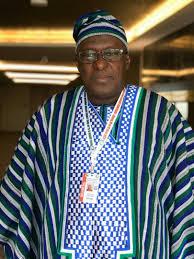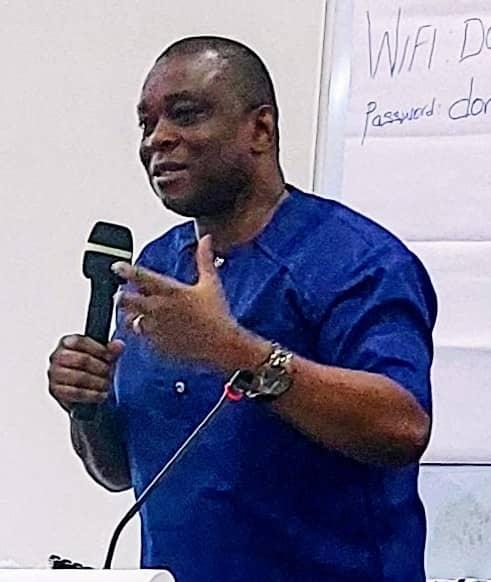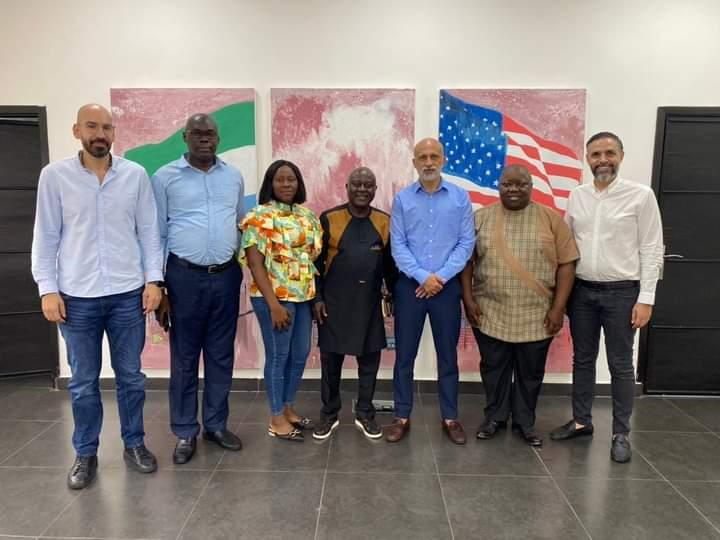Ethno-regional Divide and National Cohesion: Five Proposals for Constitutional Reform
The national conversation on the review of the 1991 constitution is about to start in earnest. Already, a wide range of ideas and proposals are being canvassed in the media by advocacy groups, party officials and informed citizens. The process promises to be engaging and educative. It will enable citizens to understand the basic law of the land that defines rights and obligations, the powers and functions of the various arms of government, and how political leaders and other public officials are chosen and held to account by the populace.
This is the first of a series of interventions I intend to make as the review process unfolds. In this piece, I focus mainly on how to overcome the seemingly chronic ethno-regional divide that has structured our politics, and suggest ways of achieving national cohesion.
The 2012 elections, like most of our previous competitive elections, revealed a deeply divided electorate. Even though the All People’s Congress (APC) made inroads into the Southern and Eastern regions, about 80% of the votes it received for the presidency came from the North and Western Area. Similarly, the Sierra Leone People’s Party’s (SLPP) presidential candidate obtained about 76% of his votes from the Southern and Eastern regions. The composition, leadership and electoral base of the two parties are unequivocally ethno-regional.
This bifurcation in the party system and voting behaviour has led to two relatively antagonistic publics that have the potential to disturb the peace and make it harder to sustain any development agenda. Party activists and sympathisers have developed a sense of entitlement or exclusion, depending on their location in the ethno-regional divide, and perceive politics as a zero-sum game in which losers believe they are excluded from key resources and offices and winners take everything. Losers and their supporters, in turn, tend to discredit most development efforts by the government even when they and the rest of society benefit from them. Under such conditions, the two main parties are not held to account by their respective supporters who are ready to believe anything they hear from their party leaders. One only needs to listen to the numerous phone-in radio programmes on current affairs to understand the depth of the division in our body politic.
Constitutional reforms are clearly required to make Sierra Leone a more cohesive country. Even though the 1991 constitution is fairly good in many areas of governance, it does not offer sufficient provisions that can help politicians and voters to transcend the ethno-regional divide and embrace the values of national cohesion. Chapter III, article 27 of the constitution prohibits discrimination on the basis of “race, tribe, sex, place of origin, political opinions, colour or creed”; and Chapter IV, article 35 affirms that a political party should not be restricted to only one ethnic group; the “name, symbol, colour or motto” of a party should not have exclusive significance to any ethnic or religious group; a party should not ‘advance the interest and welfare’ of only one ethnic group, community, geographical area or religious faith; and a party should have a “registered office in each of the Provincial Headquarter towns and the Western Area”. It is clear that these provisions have been insufficient to tame the scourge of ethnic division and antagonism in our politics.
I offer five proposals for consideration. These are in the areas of cabinet formation, internal democratic practices of parties and election of flagbearers, time limits for determining electoral disputes, and fixed dates for holding general elections.
The principle of representation, which is the bedrock of modern democracies, assumes that those who govern, do so on behalf of the people. Individual interests are often aggregated into larger group interests, such as those of industrial workers, entrepreneurs, farmers, landlords, traders, artisans, professionals, women, and ethnic and religious minorities.
In advanced industrial democracies, interest groups and political parties tended in the early period of democratization to cluster according to the basic capital-labour cleavage associated with industrialization. Indeed, the ideologies of most political parties reflected the aspirations of the key interest groups they sought to promote. Interests based on horizontal cleavages, such as those of women and ethnic groups, were ignored. However, most industrial democracies were relatively homogenous nation-states, and even though women’s representation in public institutions was limited, women as voters could be found in all major political parties. It was, therefore, relatively easy to incorporate women’s demands in public policy when women’s voices grew louder for greater representation and empowerment.
However, in most developing countries today, political parties do not cluster according to economic class interests. Most parties lack clearly defined ideologies that are based on economic aspirations or what people do for a living. Most developing countries are also multi-ethnic, making it possible for class interests to be downplayed by individuals in their choice of parties, and for parties that seek to draw support from specific economic interest groups to be restricted to only one ethnic segment of such groups. Even though the APC likes to claim that it is a “common man’s party”, this message, even if true, resonates only among commoners in the North and Western Area. The danger of having a public sector that is highly skewed in favour of one ethno-regional group is very high in situations where the public sphere is strongly bifurcated.
How have multiethnic democracies tackled this problem? Two methods can be highlighted: coalition governments or power sharing and constitutional provisions for multi-ethnic representation in cabinet.
Coalition governments work in parliamentary systems that use either proportional representation rules (which may encourage a fragmentation of large ethnic groups into multiple parties), as in Belgium; or first past the post constituency rules where a dominant ethnic group (which may also fragment) enters into an alliance with smaller parties that draw their support from minority ethnic groups, as in Malaysia. The current Belgian cabinet is composed of six political parties, three each from the two dominant ethnic groups of Walloons (French) and Flemish (Dutch). Because of the fragmentation of the two ethnic groups into multiple parties, no single party has the numerical strength to form a government alone. Malaysia’s cabinet is composed of a Malay party, the United Malays National Organization, and parties representing Chinese and Indian communities, with UMNO as the dominant party. Because of the fragmentation of the Malay vote into multiple parties, UMNO increasingly relies on the Chinese and Indian parties to win elections. In Switzerland, all the four main political parties, which are multi-ethnic in character, share the seven ministries that constitute the cabinet based on their performance in the popular vote.
The second method — that of constitutional provisions for multi-ethnic representation in cabinet– has been tried in several countries, including Nigeria, Belgium and Switzerland. In Nigeria, which has a presidential system of government with first past the post electoral rules, the constitution compels the president to appoint at least one cabinet minister from each of the 36 states. In Belgium, the constitution limits the number of cabinet ministers to 15 and stipulates that these should be equally distributed between the two ethnic groups: French and Dutch. In Switzerland, there is an informal rule, now institutionalized, which requires that at least two of the seven members of the federal executive council should be French in order to prevent German speakers from using their numerical strength to grab all seven cabinet posts.
What can be done in Sierra Leone? Sierra Leone practices a presidential system of government with first past the post electoral rules. I have argued elsewhere that the proportional representation system tends to empower party leaders at the expense of voters, and is weak on accountability. At the same time, a parliamentary system in a context where the political culture does not promote compromise or moderation may lead to grid-lock and frequent elections and change of government. Besides, even if Sierra Leone had a parliamentary system today, the APC would not need a coalition to govern since it has more than 60 percent of the contested parliamentary seats. Combining a parliamentary system with proportional representation might produce a coalition government, but the voting behaviour of the two dominant ethnic groups will have to fragment into multiple parties for viable small parties to emerge and the cabinet to be substantially multiethnic. It is also worth pointing out that coalition governments do not work well in presidential systems of government, unless if the president’s party does not enjoy an absolute majority in parliament. The coalition between the SLPP government of Ahmad Tejan Kabbah and Thaimu Bangura’s People’s Democratic Party ended in failure, as did that of Ernest Koroma’s APC government and Charles Margia’s People’s Movement for Democratic Change. The lesson here is that a president who has already won an election can dispense with the support of the junior party in the coalition without fear of losing power.
My proposal is to retain the presidential system of government and first past the post constituency rule and introduce constitutional provisions for the formation of multiethnic cabinets.
So, my first proposal is this:
Proposal 1:
The President shall appoint at least one cabinet minister from each of the fourteen electoral districts; and no two regions shall account for more than 60 percent of cabinet appointments.
The last part of the proposal is derived from the fact that no two regions combined—North-West, South-East, North-East, North-South, South-West, East-West— account for more than 60 percent of registered voters or the country’s population.
The second and third proposals focus on ways of de-ethnicizing our political parties. Part of the problem here is the lack of internal democracy in the two main parties, and association of party identities with the ethnicities of those who lead them. Both parties have not succeeded in embedding open democratic practices in the way they choose their representatives. Powerful individuals and groups often manipulate internal electoral processes in order to produce outcomes that favour their preferences. Lack of internal democracy empowers those who thrive on the ethno-regional identities of the parties and makes it difficult for modernizers with a national outlook to emerge and take root in party structures.
In the run-up to the 2012 elections, the two parties took important steps to democratize their methods of choosing representatives by introducing electoral college rules. However, the implementation of the rules for conducting the primaries was fraught with difficulties. In a number of cases, those entrusted with the responsibility to organize the primary elections skewed the selection process in favour of candidates of their choice.
One recent development is the return of the culture of “zero competition” (unopposed candidates) in the ruling APC. This was vividly demonstrated in the party’s last national convention when all the candidates for the key party posts went unopposed. The public now refers to this practice as “politics of compensation”—i.e. giving jobs or resources to those who withdraw from contests. This is not only bad for democracy, it is also a cost on our treasury. Some members of the SLPP, on the other hand, have resorted to threats or use of force in their own primaries to impose their will on the party (the so-called “pa-o-pa syndrome”) because the party lacks the resources to buy off those who seek to challenge candidates of influential personalities.
My second proposal is this:
Proposal II:
A political party shall conduct primary elections in choosing its candidates for presidential, parliamentary and local council elections; each registered party member at the local, constituency, district or national level shall participate in such elections and shall be entitled to one vote.
Transforming our main political parties into substantially multiethnic institutions also requires changes in the way flagbearers are chosen in presidential elections. Individuals from all regions and ethnicities must have equal opportunities to contest and win the top jobs in the main parties. In Nigeria, the ruling party, the People’s Democratic Party, has a policy of rotating the post of flagbearer between the Northern and Southern regions, which are divided into six geo-political zones. In Switzerland, the presidency rotates every year among the seven members of the federal executive council, which means that a French person will have the chance to become a president twice within a seven year cycle. In Bosnia, the presidency rotates very eight months among members of the executive council that is made up of the three main ethnic groups of Serbs, Bosniaks and Croats.
My third proposal is this:
Proposal III:
A political party shall not choose its flagbearer from the same region or ethnic group in three consecutive elections; however, a flagbearer who has served for only one term as President can be chosen as a flagbearer for a second and final term of office.
My fourth and fifth proposals are about fairness in the electoral process. The constitution needs to be amended to compel the courts to decide election petitions within a defined period. Petitions emanating from the 2007 elections dragged on for several years, and it took about six months for the Supreme Court to decide on the petition relating to the 2012 presidential election. Right now the courts are yet to determine petitions on two parliamentary constituencies. This means that voters in those two constituencies have not been represented in parliament since November 2012. This is a messy and unacceptable state of affairs. Confidence in the judiciary can only be enhanced if losers believe that their grievances can be heard and resolved not only fairly but also speedily. We should take a leaf from the new Kenyan constitution, which stipulates that all electoral disputes on presidential elections should be decided within two weeks, and that winners should not be sworn in or inaugurated before electoral disputes have been resolved by the courts.
I quote the relevant sections of the Kenyan constitution as my fourth proposal to guide our discussion:
Proposal IV:
“Within fourteen days after the filing of an election petition (against the President-elect), the Supreme Court shall hear and determine the petition and its decision shall be final.
If the Supreme Court determines the election of the President-elect to be invalid, a fresh election shall be held within sixty days after the determination.
The President-elect shall be sworn in on the first Tuesday following—
a) the fourteenth day after the date of the declaration of the results of the presidential election, if no petition has been filed; or
b) the seventh day following the date on which the court renders a decision declaring the election to be valid, if any petition has been filed”.
We may wish to select a different day for the swearing in of the President-elect—- say the first Saturday following the fourteenth day after the declaration of the results if there is no petition, or the seventh day after fresh elections have been held after a successful petition.
My final proposal is to establish a fixed date for holding presidential and parliamentary elections. The present arrangements in the 1991 constitution are rather clumsy. The date shifts after every election. Chapter V, article 46 (1) states that “No person shall hold office as President for more than two terms of five years each whether or not the terms are consecutive”. And yet, article 43 allows for an interval of up to three months after the expiration of the five year term of the president for elections to be held. This means that a president can enjoy an extra three months in office after his or her term has expired. If that president serves for two terms, he or she would have served for ten and half years instead of ten. Currently, there is speculation that the next election might not be held in 2017 but in 2018. This culture of “bonya” (extras) should be terminated. We do not run a parliamentary system of government where it is impossible to fix a specific date for a general election. Incidentally, one advantage of having a fixed date is that we can avoid organizing an election in the rainy season when movement of people and vehicles within the country is very difficult.
My proposal, again drawing on the Kenyan constitution, is this:
Proposal V
An election of the President shall be held on the same day as a general election of Members of Parliament on the second Saturday in November in every fifth year.
I will conclude this piece by stressing the point that the constitutional review process offers us a fresh opportunity to fix our chronic ethno-regional problem and create a level playing field in the electoral process. We were lucky that our brutal war was not fought on ethno-regional lines. However, we should not wait for a Kenyan type of ethnic crisis before we try to solve the problem, which everybody knows exists. It is more costly to rebuild a broken house than to carry out timely and incremental or moderate repairs. The five proposals that I have offered may even encourage the emergence of new parties with a social justice agenda that is not constrained by the ethno-regional divide.
By Yusuf Bangura
Stay with Sierra Express Media, for your trusted place in news!
© 2013, https:. All rights reserved.






